
In the vibrant, ever-evolving world of coaching, one thing is abundantly clear: your online presence is crucial. That's right, we're talking about coaching websites.
Now more than ever, aspiring coaches and seasoned veterans need a professional, engaging, and compelling website to showcase their services, connect with potential clients and, ultimately, drive their coaching business to new heights.
If you've been asking questions like, "Where do I start?" or "What elements make a coaching website truly effective?" then you're in the right place. This comprehensive guide has got you covered.
We'll journey through everything from defining your coaching niche and understanding your audience to essential website elements, platform choice, SEO mastery, and impactful marketing strategies.
We'll also draw inspiration from successful coaching websites to spark your creativity and inform your approach.
By the time we're done, you'll be equipped with the knowledge and confidence you need to build a coaching website that stands out and resonates deeply with your target audience, amplifying your brand and accelerating your business growth.
Ready to craft a coaching website that truly shines? Let's dive in and start this exciting journey.
Here's what we'll cover:
Identifying Your Coaching Niche and Target Audience
Let's kick things off by helping you nail down who you're coaching and what you're coaching them on.6 Tips for Crafting a Stellar Coaching Website
This section is all about the essential elements your coaching website should have. Get ready for some pro tips!Choosing the Right Platform and Tools
So, where's the best place to build your website, and what tools will help you thrive? Let's find out!Creating Valuable Content for Your Audience
Next up, we're going to dive into content creation. This is your chance to really connect with your audience.SEO for Coaching Websites
SEO may sound techy, but it's vital. We'll break it down in a way that's easy to understand.Marketing Your Coaching Website
Once your website is up and running, it's time to let the world know about it. Ready to become a marketing whizz?Optimizing Your Coaching Website
In this section, we'll look at how to analyze your site's performance and make it even better.Case Studies: Successful Coaching Websites
Learn from the best! We'll look at some coaching websites that are absolutely nailing it.Essential Resources for Building Your Coaching Website
To wrap things up, we've gathered some awesome resources to help you on your web-building journey.Final Takeaways: Unleashing Your Coaching Potential Online
We round things off with some key points to remember as you embark on your exciting journey of creating your coaching website.
Identifying Your Coaching Niche and Target Audience
Before you even think about color schemes, logos, or whether to use a serif or sans-serif font, there's a fundamental question you need to answer:
What is your coaching niche, and who is your target audience?
Let's break it down.
Your Coaching Niche
Your coaching niche is the specific area in which you specialize. It could be anything from life coaching, business coaching, health and wellness coaching, career coaching, relationship coaching, to leadership coaching – the list goes on.
Identifying your niche isn't just about knowing your expertise; it's about understanding where your passion and skills intersect with a need in the market.
It's about identifying the unique value proposition you and only you can bring to your clients.
To find your coaching niche, ask yourself:
What area am I passionate about and skilled in?
Where do I have real-life experience or credentials that add credibility to my coaching?
What type of clients do I feel most drawn to work with?
What common challenges or goals do these individuals face, and how can I help?
Your Target Audience
Once your niche is dialed in, it's time to turn your attention to your target audience – the specific group of people you want to attract and serve with your coaching services.
Your target audience goes beyond basic demographics like age and location.
It's about understanding their needs, desires, pain points, challenges, and aspirations. It's about knowing what makes them tick, what keeps them up at night, and how you can help transform their lives or businesses.
To define your target audience, consider the following:
What demographic characteristics do they share (age, gender, location, occupation, etc.)?
What are their core values and beliefs?
What challenges and pain points do they face that align with your niche?
What are their aspirations, and how can your coaching help them get there?
Remember, the more deeply you understand your target audience, the more effectively you can communicate your value proposition.
When your audience feels seen and understood, they're more likely to trust you and invest in your coaching services.
So take the time to really get to know your niche and target audience. It's the first crucial step in building a coaching website – and a coaching business – that resonates and achieves success.
6 Tips for Crafting a Stellar Coaching Website
Creating a compelling coaching website involves various elements.
Here are some tips to ensure your website not only looks professional but also engages your target audience:
1. Professional and approachable photography
Use high-quality, professionally taken photos to elevate your brand and give an impression of professionalism.
Choose photos that reflect your brand and resonate with your target audience.
Ensure your photos are approachable, making you seem friendly and accessible. Consider including a professional headshot of yourself.
Use images sparingly and purposefully. Overloading your site with images can make it look cluttered and distract from your message.
2. Engaging and Clear Copy
Keep your language simple, clear, and easy to understand. Avoid jargon that your audience may not be familiar with.
Speak directly to your target audience. Address their needs, desires, and pain points.
Convey your unique value proposition. What makes your coaching services unique? Why should someone choose you as their coach?
3. Effective Call-to-Action (CTA)
Make your CTA clear and compelling. It should tell visitors exactly what you want them to do next.
Use action words to make your CTA engaging and persuasive.
Consider the placement of your CTAs. They should be easy to find and not overwhelming.
4. Logical Structure
Ensure your website is easy to navigate. Your visitors should be able to find the information they're looking for without confusion.
Consider the flow of your website. The information should be structured logically, guiding visitors from one section to the next.
Make sure your contact information is easy to find. Consider adding it to the header or footer of your website so it appears on every page.
5. Clarity
Keep your design clean and uncluttered. This makes your site look professional and allows your content to shine.
Use headers, bullet points, and white space to make your content easy to read and digest.
Ensure your website is consistent with your brand in terms of colors, fonts, and overall style.
6. Mobile Responsiveness
Ensure your website is mobile-friendly. Many people browse the internet on their phones, so your website should look and function well on smaller screens.
Remember, your website is often the first impression potential clients have of you, so it's worth investing time and resources to make it as effective as possible.
As a coach, your goal is to inspire and help people, and your website should reflect that mission.
Choosing the Right Platform and Tools
Building a coaching website doesn't mean you need to become a tech guru overnight. Various platforms and tools available today can make the process seamless, even for non-techies.
However, choosing the right ones for your needs is vital to your website's success.
Comparing Website Builders and Platforms
When it comes to creating your website, the first decision you need to make is which website builder or platform to use.
Here, we're talking about the foundation of your website – where it'll live, how it'll function, and how you can manage and update it.
Popular website builders include WordPress, Wix, and Squarespace. WordPress offers extensive flexibility and a wide range of plugins but may have a steeper learning curve. Wix and Squarespace are known for their ease of use and beautiful design templates but may lack some advanced functionalities.
The key is choosing a platform that aligns with your technical skill level, fits your budget, and offers the features and flexibility you need for your coaching website.
Let's dig a bit deeper into these widely-used website builders:
WordPress
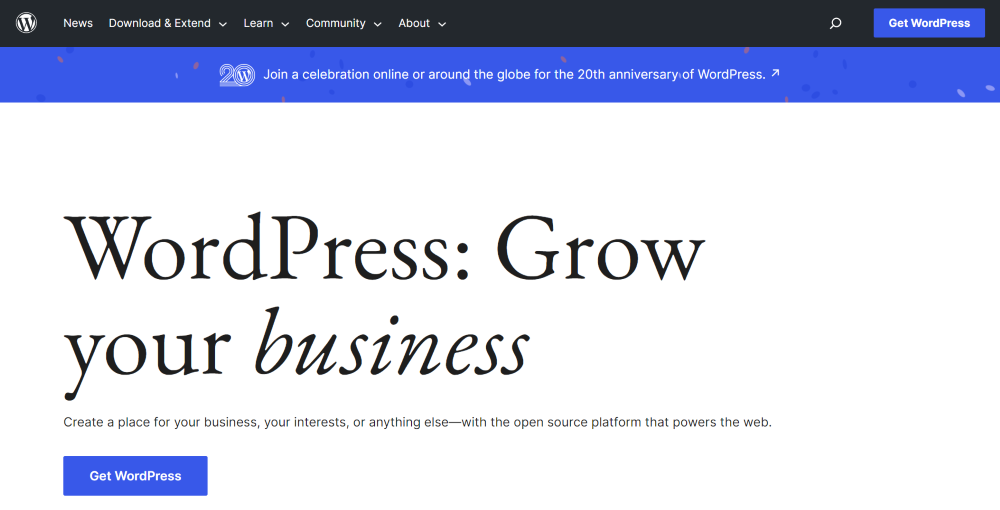
WordPress is an extremely versatile and powerful website builder and content management system. It's available in two forms: WordPress.com, a hosted platform, and WordPress.org, a self-hosted platform.
Key features of WordPress include:
Customizability: WordPress offers thousands of themes and plugins, allowing for near-endless customization and functionality. Whether you need an e-commerce platform, a booking system, or SEO optimization tools, there's likely a plugin for that.
Flexibility: From personal blogs to e-commerce sites to professional business websites, WordPress can handle it all.
Community Support: Given its vast user base, WordPress has a large community of users and developers, which can be a valuable resource for getting help and support.
Content Management: WordPress was initially designed as a blogging platform, so its content management and publishing tools are top-notch.
Wix
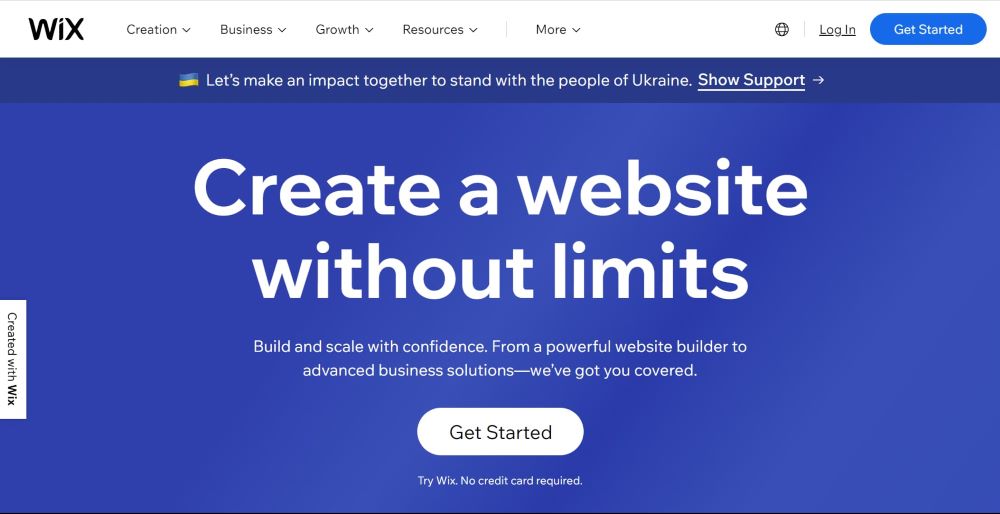
Wix is a user-friendly, drag-and-drop website builder known for its simplicity and ease of use.
Key features of Wix include:
Intuitive Site Builder: Wix's drag-and-drop interface makes it easy for anyone to create a website, regardless of technical skill level.
Templates: Wix offers hundreds of pre-designed templates customized to various industries and uses.
Wix ADI: This stands for Artificial Design Intelligence, a feature where Wix will automatically create a site for you based on your answers to a few questions.
Apps: Wix has a dedicated app market where you can add functionalities like forms, galleries, social media integrations, and more.
Squarespace
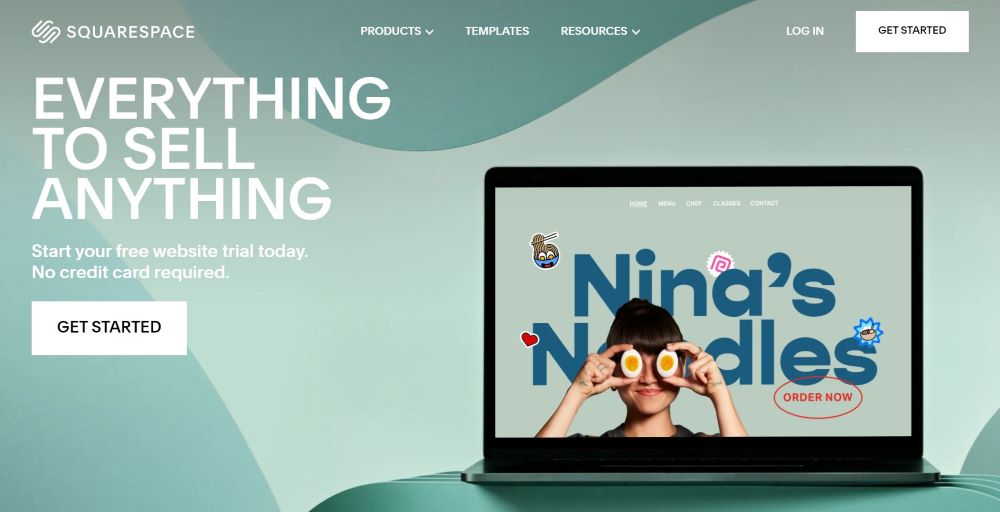
Squarespace is a website builder known for its stunning, design-focused templates.
Key features of Squarespace include:
Beautiful Design: Squarespace is arguably the leader when it comes to beautifully designed, mobile-responsive templates.
All-in-One Platform: All Squarespace plans include hosting, SSL security, and even a free domain name for the first year.
E-commerce Capabilities: Squarespace offers robust e-commerce features, making it a good choice for those looking to sell products or services online.
Blogging Tools: Squarespace includes comprehensive blogging tools, including multi-author functionality, AMP support, and the ability to schedule posts.
Each of these platforms has its strengths and may be better suited to different types of users and purposes. As always, the key is to assess your needs, skills, and budget and choose the platform that best aligns with these.
Now let's delve into these platforms designed specifically for managing your coaching business:
Clarityflow
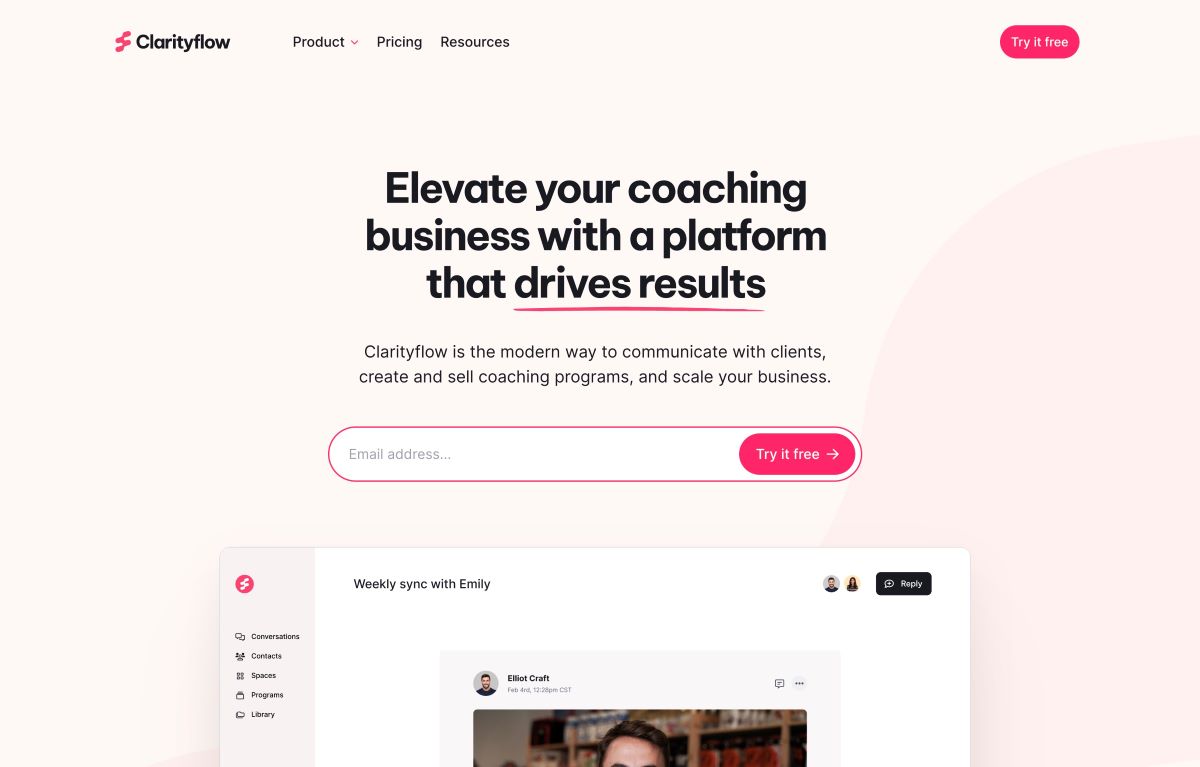
Designed specifically for coaches, Clarityflow is an all-in-one coaching platform designed to streamline various aspects of a coaching business, allowing coaches to focus more on their clients and less on administration.
Its user-friendly interface, coupled with its extensive suite of tools tailored to the needs of coaches, makes it a standout choice.
Key features of Clarityflow include:
Asynchronous Client Messaging: Stay connected with threaded async messaging with video, screen, audio, or text. You also have the option to attach files and share your screen.
Client Onboarding: Create personalized onboarding flows (or use a template) for every new client, complete with a welcome sequence that leads directly into their coaching program with you.
Integrated Payment System: Easily process payments by using Clarityflow’s Stripe integration and get an organized dashboard to see all of your customers and payments. Your clients get an easy-to-use portal where they can manage their payment methods, get invoices, and more.
Custom Branding: Clarityflow gives you the tools to create, brand, and offer coaching to your clients in a customizable—and brandable—solution. Map your own domain name, and apply your own brand and colors.
Group Coaching: Scale your business with group coaching! From your group members' perspective, they can onboard into your coaching groups in just a few clicks.
Embed: Clarityflow provides you with embed codes that you can place in the HTML of your website so that you can have interactive messages, conversations, and intake pages on your already existing website
NudgeCoach
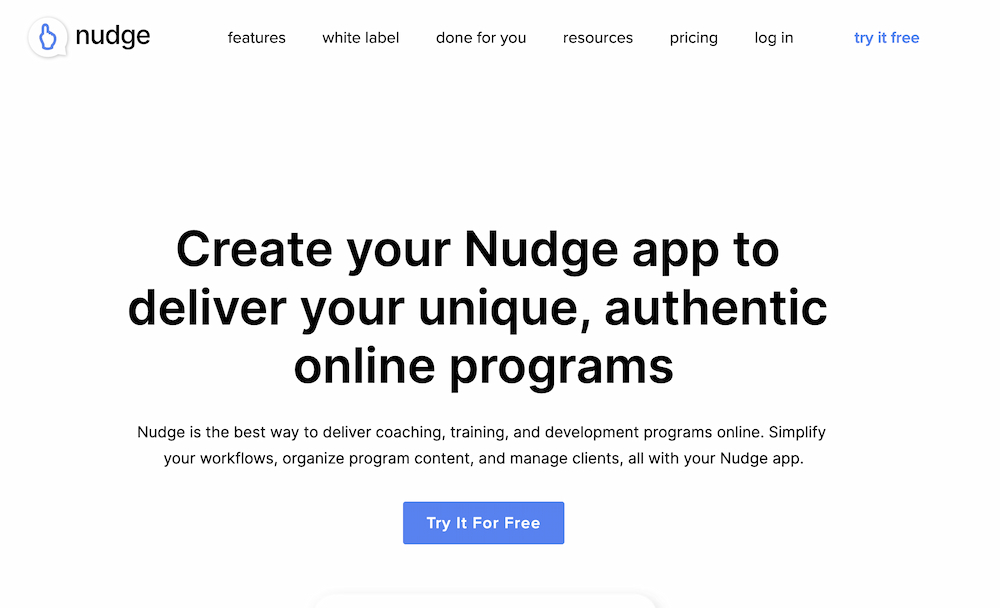
NudgeCoach is designed to help health and wellness coaches manage their clients effectively, with a focus on constant communication and engagement.
Key features of NudgeCoach include:
Robust Client Tracking: Monitor your clients' progress and provide personalized feedback based on their activities.
Mobile App: The NudgeCoach app allows for seamless communication between you and your clients, keeping engagement high.
Automated Scheduling: NudgeCoach offers an automated scheduling system for easier appointment setting, helping you manage your time more efficiently.
Satori

Satori is an all-in-one coaching platform focused on streamlining the administrative tasks associated with running a coaching business.
Key features of Satori include:
Automated Onboarding: Satori offers automated client onboarding, handling tasks like agreement signing and initial questionnaire distribution.
Integrated Scheduling and Payment: Satori combines scheduling and payment processing in one platform, making it easier for your clients to book and pay for their sessions.
Custom Forms and Contracts: You can create custom intake forms, contracts, and other documents within the platform.
Each of these platforms provides a range of features specifically tailored to the needs of coaches, aiming to streamline operations, improve client management, and ultimately enhance the overall coaching experience.
The right choice will depend on your specific needs, style of coaching, and the types of features and functionalities you value most.
Integrating Essential Tools and Plugins
Once you've chosen your platform, the next step is to think about the additional tools and plugins you may need. These might include email marketing tools, scheduling systems, CRM systems, live chat plugins, or SEO tools, to name a few.
Again, Clarityflow shines here, offering built-in tools and integrations for client scheduling, payment processing, email marketing, and more, eliminating the need for integrating numerous third-party tools.
However, depending on your chosen platform and specific needs, you might need to explore tools like Mailchimp for email marketing, Calendly for appointment scheduling, or Yoast SEO for optimizing your content.
Security and Privacy Considerations
Lastly, but no less important, is the matter of security and privacy. Your coaching website will likely handle sensitive client information, so ensuring your website is secure and complies with privacy laws like GDPR or CCPA is critical.
Consider features like SSL encryption (the 'https' you see in a secure website address), secure payment gateways, and clear privacy policies. Remember, a secure website not only protects you and your clients but also builds trust with your website visitors.
Choosing the right platform and tools for your coaching website is crucial in your website-building journey. Remember to consider your unique needs and do your research before making a decision.
Creating Valuable Content for Your Audience
As a coach, creating meaningful, relevant content is vital to establish yourself as an expert, build trust with potential clients, and provide value to your audience.
The content you create can come in many different forms, each offering unique benefits and appealing to different segments of your audience.
Here's a breakdown of some key content types you might consider:
Blog Articles
Writing blog articles allows you to share your insights, expertise, and experiences in a format that's easily accessible to your audience. Not only do they provide value to your readers, but well-written, keyword-optimized articles can also improve your website's SEO, making it easier for potential clients to find you.
When writing articles, focus on topics that are relevant to your coaching niche and address common questions or challenges your audience might have.
Remember, the goal is to provide value – your content should leave the reader feeling like they've learned something new or gained a fresh perspective.
Video Content
Videos can be a highly engaging way to share content, offering a more personal and dynamic way to connect with your audience. You might create instructional videos, 'day in the life' vlogs, interviews with other experts, or live Q&A sessions.
Remember, the quality of your video content matters – ensure your videos are well-lit, the audio is clear, and the content is well-planned and edited.
Podcasting
Starting a podcast can be a fantastic way to reach a broader audience, establish authority in your niche, and delve deeper into topics of interest. As a coach, you could use your podcast to share success stories, interview experts, or provide bite-sized coaching sessions.
Podcasts require a more technical setup than blogs or social media posts, but with the popularity of podcasting on the rise, it could be a worthwhile investment.
E-Books and Resources
Creating downloadable resources like e-books, checklists, worksheets, or guides can provide significant value to your audience.
Not only can they help your audience learn more about a topic, but they can also be an excellent lead-generation tool if you offer them in exchange for an email address.
Webinars or Online Workshops
Hosting webinars or online workshops allows you to provide value to your audience while also demonstrating your coaching style and methodology. These can be one-off events or part of a series, and they can be free or paid.
No matter what type of content you choose to create, always remember that the key is quality over quantity. It's better to create a few pieces of great content than lots of low-quality content.
Additionally, be consistent in your content creation – this helps build trust with your audience and can improve your visibility online.
SEO for Coaching Websites
Search Engine Optimization, or SEO, is a key strategy to increase the visibility of your coaching website in search engine results, thus making it easier for potential clients to find you.
It involves a variety of techniques and best practices designed to make your site more attractive to search engines.
Here's an overview of some crucial SEO considerations for your coaching website:
Keywords
Identify relevant keywords that your target audience might use when searching for the services you provide. These can range from broader terms like "life coach" to more specific ones like "career transition coach for tech professionals."
Once you've identified your keywords, integrate them strategically into your website content, including your page titles, headings, body text, and meta descriptions.
Quality Content
As we mentioned earlier, creating high-quality, valuable content not only engages your audience but also improves your SEO.
Search engines favor websites that regularly update with fresh content, and if your content is engaging and provides value, visitors are likely to spend more time on your site, further boosting your SEO.
User Experience
Search engines want to provide users with the best possible results, which means they favor websites that offer a great user experience.
Ensure your site is easy to navigate, loads quickly, is mobile-friendly, and free from broken links or error pages.
Backlinks
Backlinks, which are links from other websites to yours, are a major factor in how search engines rank websites.
You can build backlinks by creating high-quality content that others want to link to, featuring on other websites, or forming partnerships with relevant organizations.
Meta Descriptions
Meta descriptions are brief summaries of your web pages that appear in search engine results.
They don't directly impact SEO rankings, but a compelling meta description can entice people to click on your site when it appears in search results.
Local SEO
Local SEO is crucial if you offer coaching services in a specific geographical area. Make sure your website includes your location, and consider listing your business on directories like Google My Business.
SEO can seem complex, but by starting with these basics, you'll be well on your way to improving the visibility of your coaching website.
Keep in mind, SEO is a long-term strategy, and it can take time to see results, but the potential benefits of increased visibility and attracting more clients are well worth the investment.
Marketing Your Coaching Website
Having an excellent coaching website is a strong start, but it's equally important to effectively market your site to attract and retain clients.
Here are several key marketing strategies you can employ to increase the visibility and reach of your coaching website:
Content Marketing
Think of content marketing like this: It's all about crafting and sharing helpful and interesting stuff that'll catch the eye of your target audience and get them hooked on what you're all about. As a coach, this could include blog posts, videos, webinars, podcasts, or downloadable resources.
By consistently providing your audience with valuable and relevant content, you position yourself as an expert in your field and build trust with potential clients.
Social Media Marketing
Social media platforms like LinkedIn, Facebook, Instagram, and Twitter provide opportunities to connect with your audience on a personal level, share your content, and drive traffic to your website.
Each platform has unique demographics and features, so choose the ones that best align with your audience and coaching style.
Email Marketing
Building an email list lets you stay in direct contact with your audience. You can use emails to share your latest content, inform your audience about new coaching services or offers, and provide value through tailored advice and insights.
Always get permission before sending marketing emails to comply with privacy laws.
SEO (Search Engine Optimization)
As mentioned earlier, SEO involves optimizing your website so that it ranks higher in search engine results for relevant keywords. Higher visibility in search results can dramatically increase your website's traffic.
Paid Advertising
Paid advertising includes methods like pay-per-click (PPC) advertising on search engines, social media ads, and sponsored content.
While this method involves an upfront cost, it can be highly effective in reaching a broader or more specific audience.
Partnerships and Networking
Partnering with other businesses or influencers in your industry can help you reach a larger audience. This could involve guest blogging, podcast appearances, joint webinars, or cross-promotions.
Similarly, online and offline networking can help you build relationships that lead to client referrals and increased visibility.
Public Relations (PR)
PR involves managing your public image and the communication you have with your audience.
This could include everything from being featured in a local news story to speaking at a major industry conference.
Each of these marketing strategies offers different benefits and may be more or less effective depending on your audience, services, and personal coaching style. Often, a combination of several strategies will be the most effective.
Remember that marketing, like coaching, is about building relationships - the more genuine and value-driven your marketing efforts, the more successful they will likely be.
Optimizing Your Coaching Website
Once your coaching website is up and running and your marketing strategies are in place, tracking, analyzing, and optimizing your site's performance is essential. This process ensures you're making the most of your online presence and continuously improving.
Here's a basic 6-step framework to help guide your efforts:

1. Setting Up Analytics
To begin tracking your website's performance, set up a tool like Google Analytics. This free tool gives you insight into your website traffic, visitor behavior, and much more.
It allows you to see where your visitors are coming from, which pages they spend the most time on, and at what point they exit your site.
2. Defining Key Metrics
Identify the key metrics that matter most to your coaching business. These could include:
Website Traffic: The number of visitors to your site.
Bounce Rate: The percentage of visitors who leave your site after viewing only one page.
Conversion Rate: The percentage of visitors who complete a desired action (e.g., booking a consultation, signing up for your email list, purchasing a coaching package).
3. Monitoring and Analyzing
Regularly check your analytics to monitor these key metrics. Look for trends or changes over time.
Are certain pages performing better than others?
Are visitors leaving quickly (indicating they're not finding what they're looking for)?
Are certain marketing efforts driving more traffic than others?
4. Making Improvements
Use the insights you gain from your analysis to improve your site. This might involve:
Tweaking your website design
Adjusting your SEO strategy
Creating more of the type of content that's performing well
Refining your marketing strategies
Remember, the goal is to improve the user experience for your visitors and increase conversions.
5. A/B Testing
A/B testing (also known as split testing) compares two versions of a webpage to see which one performs better.
This can be a powerful way to test different elements of your site, like headlines, call-to-actions, images, or content layout.
6. Repeat the Process
Website optimization is an ongoing process. Regularly reviewing your metrics, making adjustments, and testing your changes will help you continually improve your site's performance and effectiveness.
The purpose of tracking and optimizing is not just to increase your website traffic, but to attract the right kind of visitors—those who are genuinely interested in your coaching services and more likely to become clients.
Case Studies: Successful Coaching Websites
The best way to understand what makes a coaching website effective is to examine real-world examples.
Here are three case studies of successful coaching websites, detailing what makes them work:
1. Marie Forleo
Marie Forleo is a successful life and business coach. Her website is a testament to excellent branding, clear messaging, and engaging content.
What Works:
Marie's branding is consistent and visually appealing, projecting a sense of fun, energy, and authenticity.
Her messaging is clear and compelling—she speaks directly to her audience, addressing their aspirations and challenges.
Additionally, Marie leverages various content forms, including her well-known web TV show, MarieTV, and her podcast, to provide value and establish her expertise.

2. Tony Robbins
Tony Robbins is a world-renowned life and business strategist. His website effectively showcases his offerings and establishes his authority.
What Works:
Tony's website makes it easy for visitors to understand his coaching offerings. The navigation is simple and intuitive, guiding visitors to his programs, products, and resources.
Testimonials and case studies are prominently featured, providing social proof of Tony's effectiveness as a coach.
Additionally, Tony's site is rich in valuable content, including articles, videos, and a podcast, helping to build a connection with his audience.

3. The Handel Group
The Handel Group is a corporate consulting and private coaching company. Their InnerU website is professional, clear, and conversion-focused.
What Works:
The Handel Group's website design is clean and professional, aligning with their target audience of executives and corporations.
Their messaging is clear, concise, and speaks directly to the results their clients can expect.
Their site also features clear calls to action and multiple opportunities for visitors to engage further, such as signing up for a free consultation, attending a webinar, or taking a self-assessment.

What these websites have in common
Clear branding and messaging
Easy navigation
Professional design
Compelling content
Multiple opportunities for visitor engagement
Learning from these sites can provide valuable insights as you create or refine your own coaching website.
Your website should be a reflection of you and your coaching style, so while it's helpful to learn from others, always stay true to yourself and your vision for your coaching business.
Essential Resources for Building Your Coaching Website
Getting your coaching website off the ground can feel like a monumental task. But don't worry, you're not alone on this journey!
There are some fantastic resources and tools out there, ready to lend a helping hand. These are specially designed to make the process of designing and optimizing your website a whole lot easier.
Here are some of our top picks:
Web Design Templates and Builders:
Ever looked at a website and thought, "Wow, I wish mine could look like that!"? Well, with these resources, it can!
Check out these great collections of templates tailored for coaches:
WordPress Themes for Coaches: Dive into a wide variety of easily downloadable, professional themes.
Wix Templates for Personal Coaches: Get inspired by these beautifully designed, easy-to-customize templates.
Squarespace Templates: Find a style that fits your brand with Squarespace's range of modern, sophisticated templates.
SEO Optimization Guides:
We get it - SEO can seem like a complex maze. But with these guides, you'll be navigating it like a pro in no time:
Moz's Beginner's Guide to SEO: Start with the basics and work your way up with this comprehensive guide.
Google's SEO Starter Guide: Get advice straight from the source with Google's own guide.
Yoast SEO for WordPress: Yoast SEO Academy not only covers the nitty-gritty of SEO but also guides you on how to make the most of WordPress and their Yoast plugin.
Other Awesome Tools:
Need more firepower? Check out these handy tools:
Canva: This graphic design tool lets you create stunning visuals without needing a degree in graphic design.
Grammarly: Ensure your website copy is spot-on with this smart writing assistant.
Google Analytics: Track, analyze, and understand your website's traffic with this powerful tool.
Mailchimp: This all-in-one platform is great for managing your client communication.
Remember, your website is a reflection of your coaching practice. While these tools can provide a great foundation, the magic happens when you infuse it with your unique style and expertise.
So go ahead, explore these resources and start building a coaching website that truly stands out!
Final Takeaways: Unleashing Your Coaching Potential Online
Creating a successful coaching website might seem like a complex endeavor, but with a clear understanding of your niche and audience, a well-crafted design, compelling content, and effective marketing and optimization strategies, it's absolutely achievable.
Having a professional website is a powerful way to attract and engage with potential clients, establish your authority, and grow your coaching business.
Remember, the goal is not only to create an aesthetically pleasing website but also one that resonates with your audience, provides value, and effectively converts visitors into clients.
We've examined the essential components of a coaching website and some best practices, but remember, your website will evolve with your business.
Don't be afraid to make changes, try new strategies, and refine your approach based on your experiences and feedback.
Whether you're just starting out or looking to take your coaching website to the next level, tools and platforms like Clarityflow can help streamline your processes, enhance your online presence, and enable you to focus on what you do best—coaching and transforming lives.
Why wait? Take the first step towards a more powerful online presence by exploring Clarityflow today.


